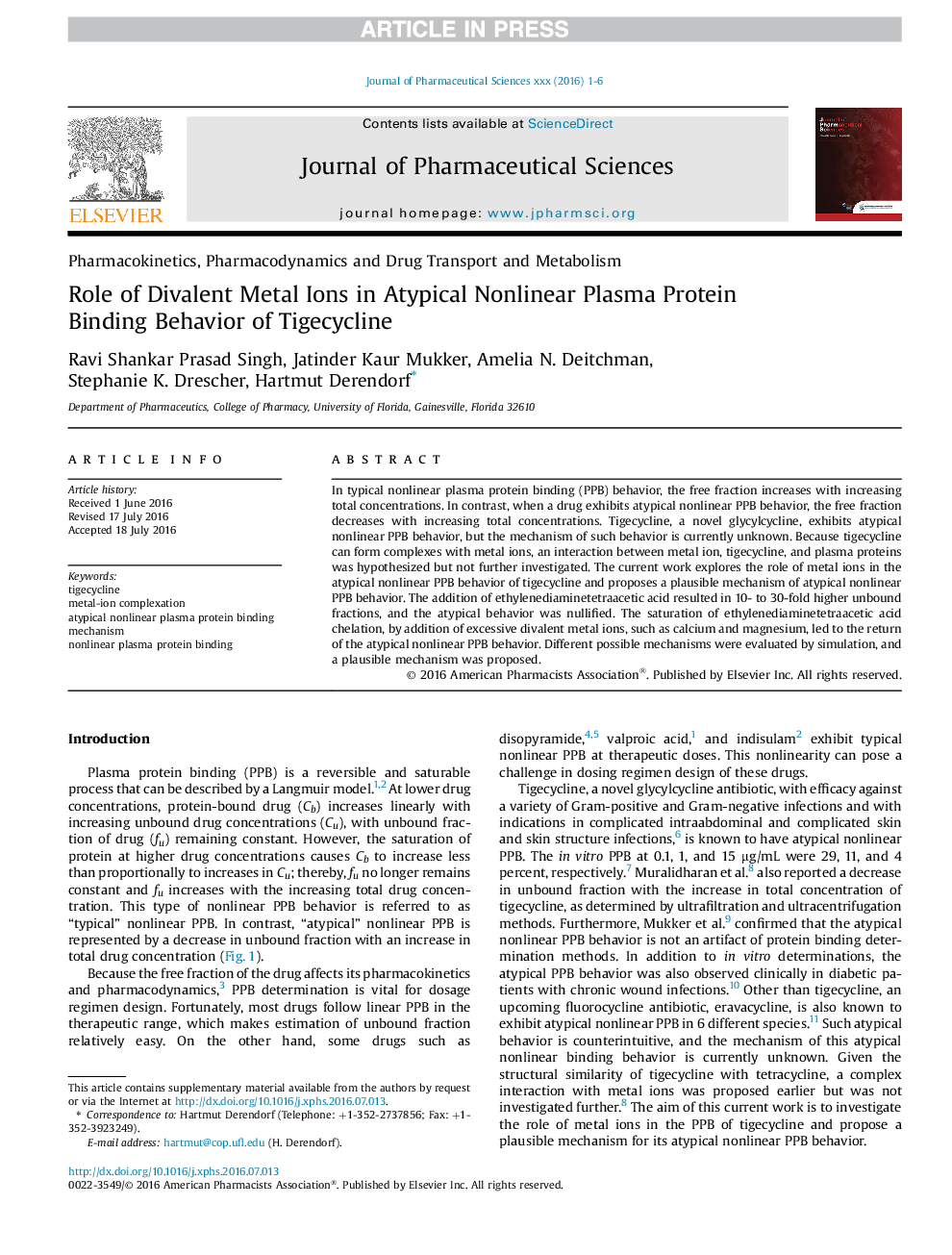| Article ID | Journal | Published Year | Pages | File Type |
|---|---|---|---|---|
| 8514777 | Journal of Pharmaceutical Sciences | 2016 | 6 Pages |
Abstract
In typical nonlinear plasma protein binding (PPB) behavior, the free fraction increases with increasing total concentrations. In contrast, when a drug exhibits atypical nonlinear PPB behavior, the free fraction decreases with increasing total concentrations. Tigecycline, a novel glycylcycline, exhibits atypical nonlinear PPB behavior, but the mechanism of such behavior is currently unknown. Because tigecycline can form complexes with metal ions, an interaction between metal ion, tigecycline, and plasma proteins was hypothesized but not further investigated. The current work explores the role of metal ions in the atypical nonlinear PPB behavior of tigecycline and proposes a plausible mechanism of atypical nonlinear PPB behavior. The addition of ethylenediaminetetraacetic acid resulted in 10- to 30-fold higher unbound fractions, and the atypical behavior was nullified. The saturation of ethylenediaminetetraacetic acid chelation, by addition of excessive divalent metal ions, such as calcium and magnesium, led to the return of the atypical nonlinear PPB behavior. Different possible mechanisms were evaluated by simulation, and a plausible mechanism was proposed.
Related Topics
Health Sciences
Pharmacology, Toxicology and Pharmaceutical Science
Drug Discovery
Authors
Ravi Shankar Prasad Singh, Jatinder Kaur Mukker, Amelia N. Deitchman, Stephanie K. Drescher, Hartmut Derendorf,
